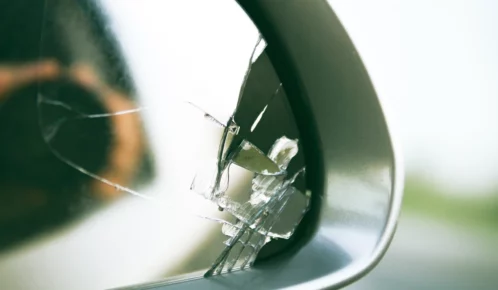If your child has suffered a brachial plexus injury, he or she may suffer long-term damage that impacts his or her health and mobility. There are many ways that a person may suffer a brachial plexus injury, but these injuries are commonly acquired during birth. This birth injury may be caused by medical malpractice. If your child sustained a brachial plexus injury because of medical malpractice during birth, you may be able to file a malpractice lawsuit for brachial plexus injuries.
Table of Contents
What Is a Brachial Plexus Injury?
The brachial plexus is a bundle of nerves around the spinal cord, between the neck and shoulders. These nerves provide feeling and movement in the upper limbs, including the chest, shoulder, arms, and hands. A brachial plexus injury occurs when the brachial plexus gets stretched, compressed or torn. It can occur during delivery and occurs in around one to three births out of every 1000.
When the brachial plexus has been mildly stretched, the child may be born with a mild disability that will heal after a few months. If the injury is more severe, the child may suffer lasting symptoms, including:
- Muscle weakness in the affected arm or hand
- Decreased movement or feeling in the affected arm or hand
- Some degree of paralysis
- An arm that is bent towards the body
Brachial plexus injuries are treated with physical or occupational therapy, medications, and surgery. For some children, this can result in a lifelong disability, and it is one of a number of common and deadly types of medical malpractice.
What Causes Brachial Plexus Injuries During Birth?
Brachial plexus injuries in newborn babies can be common. They are often caused by the baby’s head or shoulders getting stuck in the birth canal. Tugging on the baby during birth can stretch the brachial plexus nerves in the neck, causing stretching or tearing in the nerves. They can also be caused by the baby’s head and neck being pushed to one side as the baby moves through the birth canal.
These injuries may also be caused by large gestational size, breech birth, a labor that is difficult or prolonged, and using forceps or vacuum during delivery. While they can occur naturally, medical malpractice frequently causes these injuries. Medical malpractice occurs if a doctor:
- Used excessive force, such as pulling on a baby’s head and neck, shoulders and arms, during delivery, or pulling on its feet during a breech delivery.
- Improperly used instruments, like forceps or a vacuum extractor.
- Should have recognized that the labor would be complicated, but allowed the mother to deliver without performing a cesarean section.
- Did not preform proper follow up after delivery.
If your child has suffered a brachial plexus injury, and you believe it was caused by medical malpractice, you may want to contact a birth injury lawyer to help you file a medical malpractice lawsuit.
How Much Is a Brachial Plexus Injury Worth?
If your child has suffered a brachial plexus injury, getting compensation is a good way to help your child cope with his or her injury. You will also need to plan for long-term costs associated with the injury. These costs depend on the severity of the injury but can include testing and monitoring, appointments with specialists, in home care, and medical supplies.
The costs of caring for a brachial plexus injury can last a lifetime. It is important to plan so that you do not end up eventually shouldering the costs on your own. Medical malpractice lawsuits may also allocate damages to compensate for the non-monetary consequences your child suffers from the birth injury. These can include the effect on your child’s quality of life, shortened lifespan, or other issues that may arise from the injury throughout the child’s life.
The value of a brachial plexus injury can vary depending on the severity of the injury. In Illinois, the parents of a girl who suffered a brachial plexus injury during birth won $20 million.
The girl was in a breech position during delivery. The doctors did not notice the positioning and therefore failed to perform a cesarean section to avoid complications. Instead, they used excessive force during the delivery to pull her from the birth canal. This caused damage to the brachial plexus nerves, resulting in the infant being born with brachial palsy. The parents claimed that if the doctors had not used excessive force, the girl would not have been born with brachial palsy.
The award included compensation for the girl having to live a life dependent on others, as well as mental suffering, pain, anguish, and future medical expenses.
The value of settlements and verdicts can vary for each claim, from very modest to large amounts. This is because the injuries can vary in severity. The compensation from medical malpractice lawsuits also varies depending on location.
The compensation awarded in your lawsuit will help your child cope with his or her injury by assisting with medical expenses, as well as compensating your child for pain and suffering. On average, brachial plexus injuries have either been settled or reached a verdict in the Plaintiff’s favor for about $2 million.
Filing a Medical Malpractice Lawsuit for Brachial Plexus Injuries
If you want to file a medical malpractice lawsuit for brachial plexus injuries, you must do so as soon as possible. Each state has a time limit on how long you have to file your lawsuit, referred to as a statute of limitations. If this time limit has expired, you will no longer be able to file your lawsuit.
To begin filing a medical malpractice lawsuit, you will need to consult with a brachial plexus lawyer who can determine the strength of your claim. The first legal step in the claim is to know what the appropriate standard of medical care is during childbirth. When this standard of care is established, the doctor’s actions are compared with this standard. This means that the doctor’s actions during childbirth are compared to what a similarly skilled doctor would have done in the same circumstances. This comparison is made using the medical information available to the doctor at the time since a doctor will not be held liable for something he or she could not know at the time of the injury.
If the doctor deviated from what a similarly skilled doctor would have done at the time, then it must be decided if this deviation is the legal cause of the injury.
You and your lawyer will need to gather evidence to show that your child’s injury was preventable. To do this, you can:
- Document the sequence of events from before, during, and after the birth.
- Collect fetal medical records, medical bills, photographs, and ultrasounds.
- Document any known risk factors.
- Get details of witnesses and medical experts who would be willing to assist.
You and your medical malpractice lawyer will also need to determine the case value. You do this by finding out what future treatment your child will need, and by creating a plan documenting the medical costs that your child is likely to occur throughout his or her lifetime. This can predict how much compensation you and your child will require to care for his or her injuries and will establish your case value.
Once the process begins, the lawsuit usually takes eighteen months to two years from the time it is filed until settlement, or the case goes to trial. The length of time is affected by the jurisdiction where the lawsuit is filed, the extent of the damages you are claiming, how many experts are involved in the case, how accessible the medical records are, and if witnesses are available, able, and willing to assist.
Your lawsuit will eventually either go to trial or settle out of court. In a settlement, the doctor you are bringing the lawsuit against will make an offer to you for compensation. This is to avoid poor publicity for the doctor and avoid the trial, which is expensive and time-consuming. Neither side will win, but you will receive a payout and the trial will close. If both parties cannot agree on a settlement, then your lawsuit will go to trial. The compensation from a trial is usually higher than from a settlement, but you are not guaranteed to win your case.



